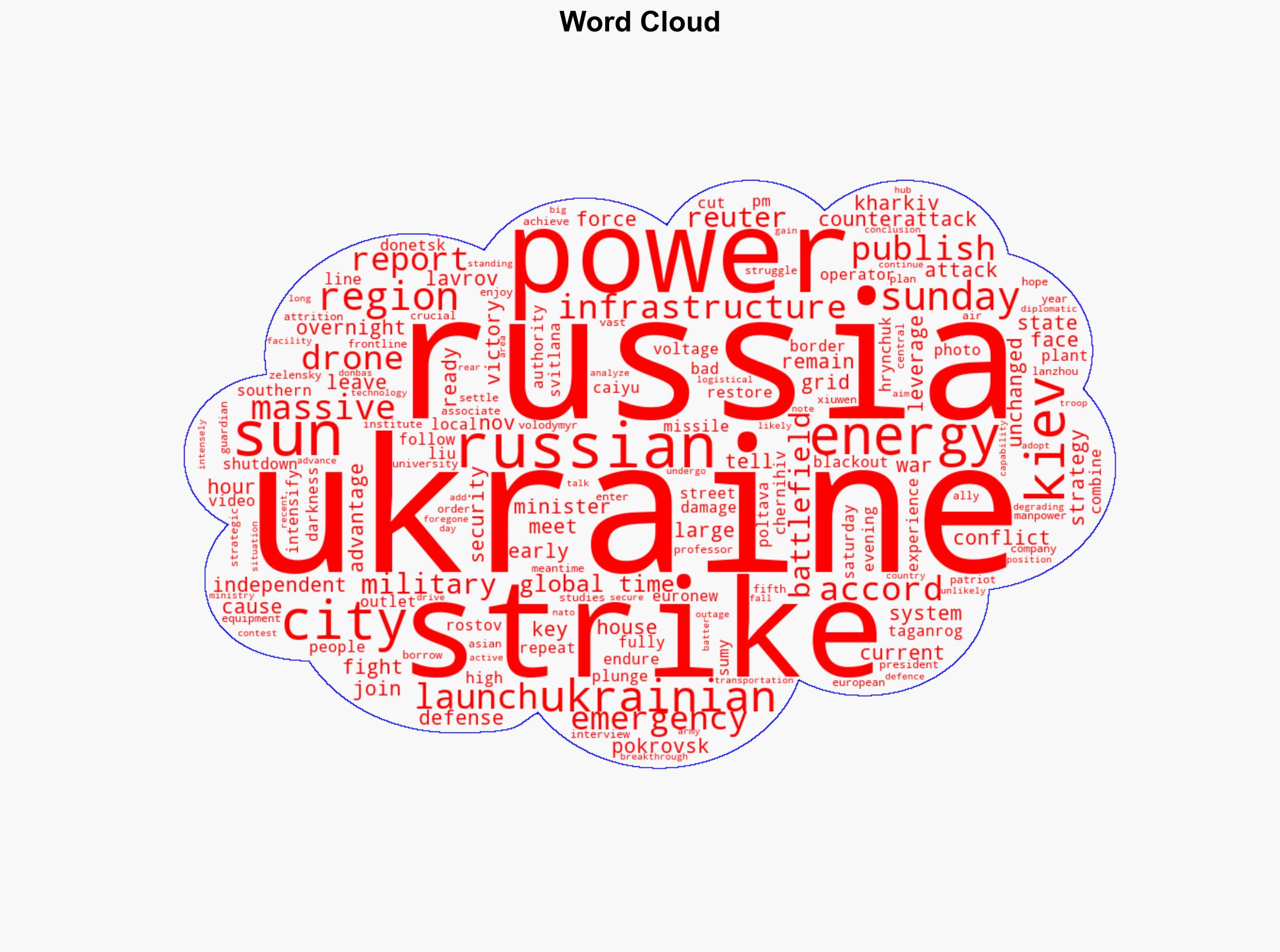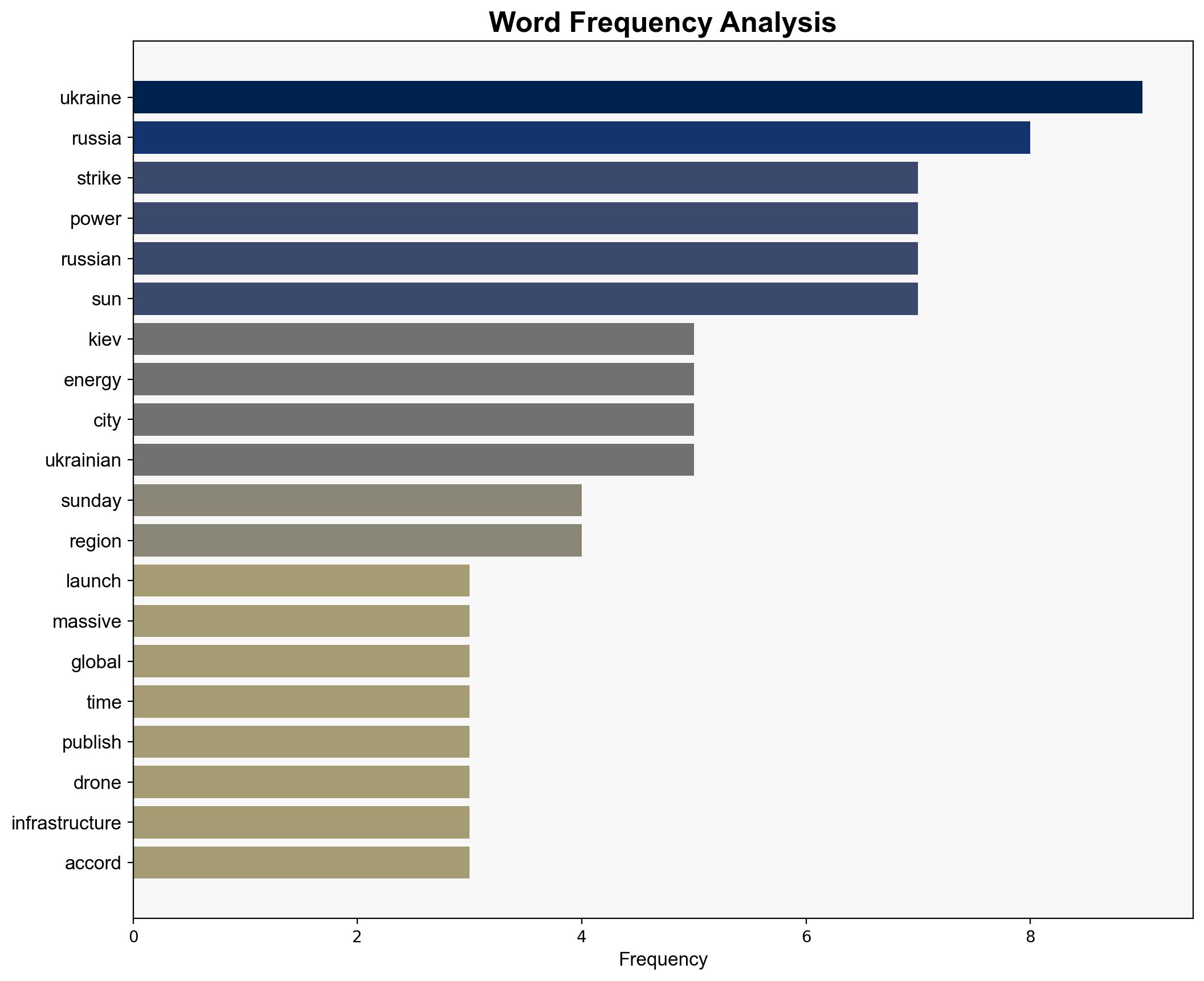Kiev launches counterattack after Russia’s ‘most massive strike’ on Ukraine’s power grid – Globalsecurity.org
Published on: 2025-11-11
AI-powered OSINT brief from verified open sources. Automated NLP signal extraction with human verification. See our Methodology and Why WorldWideWatchers.
Intelligence Report: Kiev launches counterattack after Russia’s ‘most massive strike’ on Ukraine’s power grid – Globalsecurity.org
1. BLUF (Bottom Line Up Front)
With a moderate confidence level, it is assessed that Ukraine’s counterattack strategy aims to disrupt Russian military logistics and morale following Russia’s intensified strikes on Ukraine’s energy infrastructure. The most supported hypothesis is that Ukraine seeks to leverage these counterattacks to gain diplomatic and military advantages. Recommended actions include bolstering Ukraine’s air defense capabilities and diplomatic efforts to secure international support.
2. Competing Hypotheses
Hypothesis 1: Ukraine’s counterattack is a strategic response to degrade Russian military capabilities and morale, aiming to exploit vulnerabilities in Russian logistics and infrastructure.
Hypothesis 2: Ukraine’s counterattack is primarily a defensive measure to protect its own energy infrastructure and maintain civilian morale, with limited offensive objectives.
Hypothesis 1 is more likely given the strategic importance of disrupting Russian logistics and the potential for gaining leverage in diplomatic negotiations.
3. Key Assumptions and Red Flags
Assumptions: It is assumed that Ukraine has the capability to sustain counterattacks and that international support will continue. There is also an assumption that Russia’s energy infrastructure is vulnerable to Ukrainian strikes.
Red Flags: Potential overestimation of Ukraine’s military capabilities and underestimation of Russia’s defensive measures. Deception indicators include potential misinformation about the effectiveness of Ukrainian strikes and Russian countermeasures.
4. Implications and Strategic Risks
The escalation of attacks on energy infrastructure could lead to significant civilian hardships, potentially eroding public support for the Ukrainian government. Politically, increased military actions may strain international relations and complicate diplomatic negotiations. Cyber threats could emerge as both sides seek to disrupt each other’s critical infrastructure. Economically, prolonged conflict may deter foreign investment and aid.
5. Recommendations and Outlook
- Enhance Ukraine’s air defense systems to protect critical infrastructure.
- Strengthen diplomatic channels to ensure continued international support and pressure on Russia.
- Monitor Russian military movements and prepare for potential escalation scenarios.
- Best Scenario: Successful Ukrainian counterattacks lead to a strategic advantage and favorable diplomatic outcomes.
- Worst Scenario: Escalation leads to widespread infrastructure damage and civilian casualties, diminishing international support.
- Most-likely Scenario: Continued attrition warfare with incremental gains for both sides, prolonging the conflict.
6. Key Individuals and Entities
Volodymyr Zelensky, Svitlana Hrynchuk, Sergei Lavrov, Sun Xiuwen.
7. Thematic Tags
Regional Focus: Ukraine, Russia, Energy Infrastructure, Military Strategy, Diplomatic Relations.
Structured Analytic Techniques Applied
- Causal Layered Analysis (CLA): Analyze events across surface happenings, systems, worldviews, and myths.
- Cross-Impact Simulation: Model ripple effects across neighboring states, conflicts, or economic dependencies.
- Scenario Generation: Explore divergent futures under varying assumptions to identify plausible paths.
Explore more:
Regional Focus Briefs ·
Daily Summary ·
Methodology





